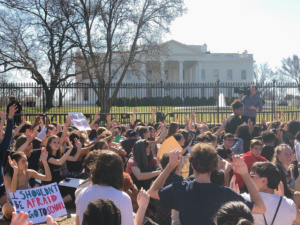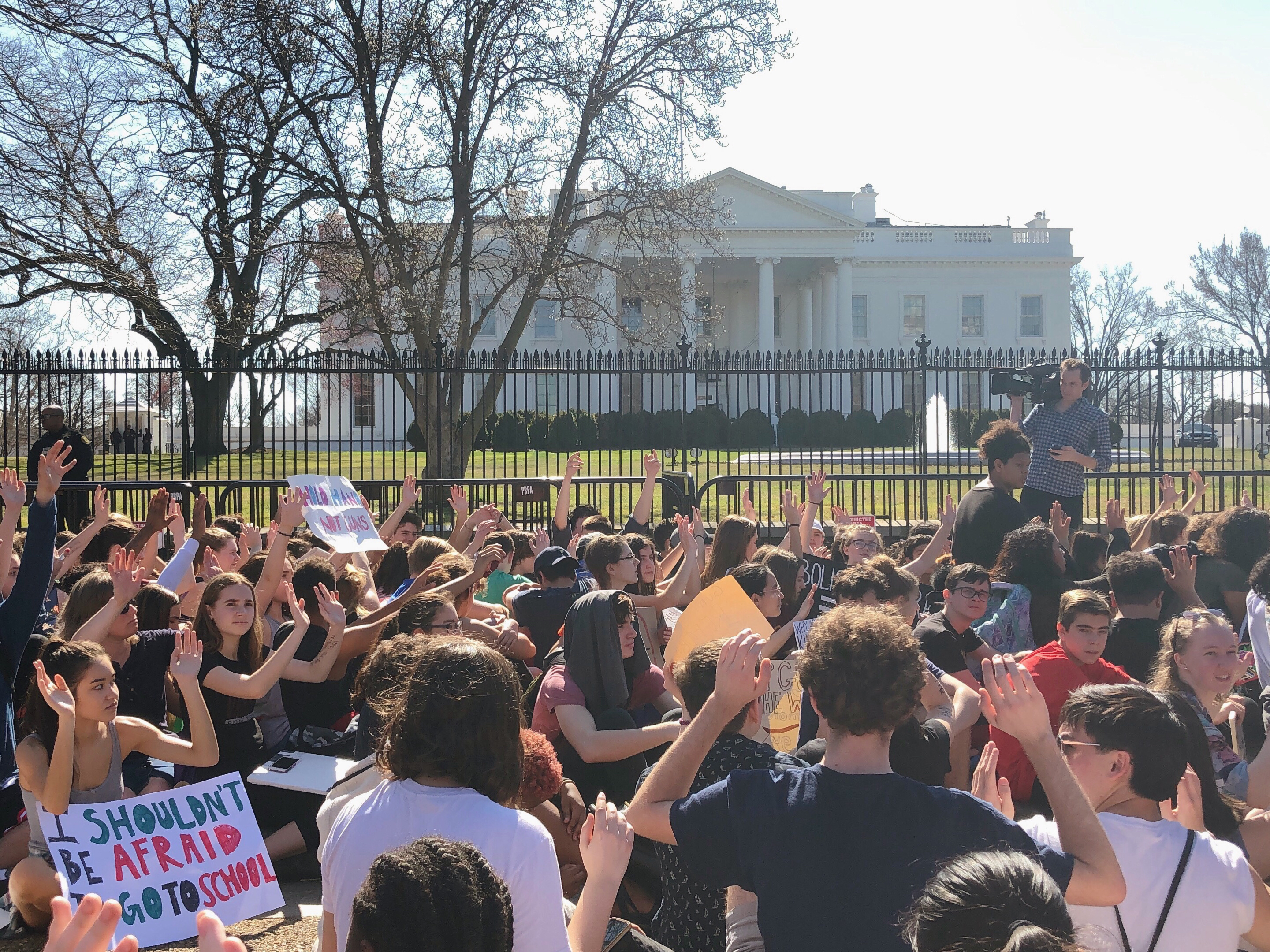Written by Ali A. Olomi
Rocked by the horrific tragedy of yet another mass shooting—a phenomenon of soul-numbing regularity unique to the American experience—the students of Stoneman Douglas High School have sparked a vigorous debate about gun control. The cyclical pattern of mass shooting, public outrage, followed by inaction have become a feature of American life as much as guns themselves both of which are rooted in a militaristic fascination with violence. Yet, the idea of guns as integral to American identity is a more recent fabrication of the gun lobby than many realize.

It is true that the Second Amendment enshrines the right to bear arms, but personal gun ownership was never guaranteed. Gun culture is a legacy of early American life in which guns were used as both an instrument of subjugation on slave plantations and a tool of expansion on frontiers. Contrary to the contemporary association of guns with freedom, the legacy of gun culture is the destruction of indigenous and black bodies.
Roger Williams University of Law Professor Carl Bogus, mined nearly eighty years of law reviews and Supreme Court decisions and found no consensus on the Second Amendment as a guarantor of individual gun ownership. Instead, history points to a concatenation of influences laden with racial anxiety and materialist interests. Before 1970, the National Rifle Association (NRA) produced only hobbyist literature about hunting. The absence of individual gun activism is glaring. Ironically, in the 1960’s—during the height of the Black Panthers —the NRA’s stance was a radical reversal from the present.
Frustrated with the results of the Civil Rights movement—legal landmarks without a doubt—Huey Newton and Bobby Seale organized the Black Panthers into police patrols. Fashionably dressed in matching leather jackets and berets, the Black Panthers openly carried guns in fulfillment of Frantz Fanon’s argument that the oppressive state needed to be shown that it was not bulletproof. The threat did not fall on deaf ears. California’s governor, Ronald Reagan, in concert with the NRA, lobbied for stricter gun control. Reagan said he saw, “no reason why on the street today a citizen should be carrying loaded weapons.” In protest, the Black Panthers dramatically took to the steps of the Capitol building in Sacramento with their guns and proclaimed, “The time has come for black people to arm themselves against this terror before it is too late.” The stunt galvanized support for the Mulford Act and it was passed in 1967.
The encounter was the beginning of the modern NRA. In 1975, Harlon Carter led an insurrection against the hobbyist wing of the NRA, rebranding it into a gun activist lobby. Carter was deeply shaped by racial anxieties. In 1931, a young Carter confronted three Mexican boys who had been loitering around his neighborhood. The altercation came to a head when Carter shot fifteen-year-old Ramon Casiano in the chest with a shotgun. Harlon Carter would go on to become President Truman’s head of the U.S. Border Patrol. Of his tenure he said, “an army of Border Patrol officers…would wage war on Mexican wetbacks.” The father of the modern NRA was molded by his experience at the Border Patrol just as surely as the early history of gun culture was rooted in the frontier and the destruction of indigenous bodies.
Under Harlon Carter’s leadership, the NRA reinterpreted the Second Amendment and rewrote its history into one of personal gun ownership. The transformation of the NRA coincided with the explosion of gun manufacturing during the Cold War as new markets were found abroad and at home. Driven by materialist incentives and the personal convictions of the racist Carter, the NRA capitalized and exploited the growing racial anxieties of conservative white rural America coalescing in opposition to the Civil Rights, the Black Panthers, and black integration into cities. Owning guns was transfigured from a hobby into a civic necessity to protect against the perceived threat of black criminals. It was a fiction readily absorbed by a population experiencing Marxian alienation. Guns were the snake oil panacea marketed to stave off the elite liberal alliance with black people post-Civil Rights. The new interpretation of the Second Amendment was made cannon through a successful marketing campaign.

The echoes of the racist past endure to this day. NRA ads feature Dana Loesh angrily reading from a teleprompter about the threat of a “they” who are coming for gun-owners while images of Black Lives Matter protesters are shown on screen. She snarls about law-abiding citizens with their “clenched fist of truth” while black bodies are depicted as lawless and rioting. The juxtaposition is not accidental, but the culmination of the project initiated by Harlon Carter. To sell more guns, the NRA capitalizes on fanning the flames of racial anxiety.
When asked about the risk of gun proliferation resulting in weapons falling into the hands of criminals, Harlon Carter replied it was the “price of freedom.” In the virulent merging of the materialist need to sell with the overt exploitation of social anxieties, mass shootings are not a bug, but a feature of a society bound to white supremacist capitalism.
I commend the passion and conviction of the high school students now leading a rising tide against the gun lobby. If we are to prevail, we must unpack and dismantle the racist and capitalist structures that hold America captive.
Ali A. Olomi is a writer, historian, and PhD candidate at the University of California, Irvine where he is also a pedagogical fellow. He works on the history of the Middle East and Islam, as a scholar and activist. He’s part of grassroots mobilizing efforts and has led teach-ins against military intervention, anti-black racism, homophobia, and Islamophobia.


Add Comment